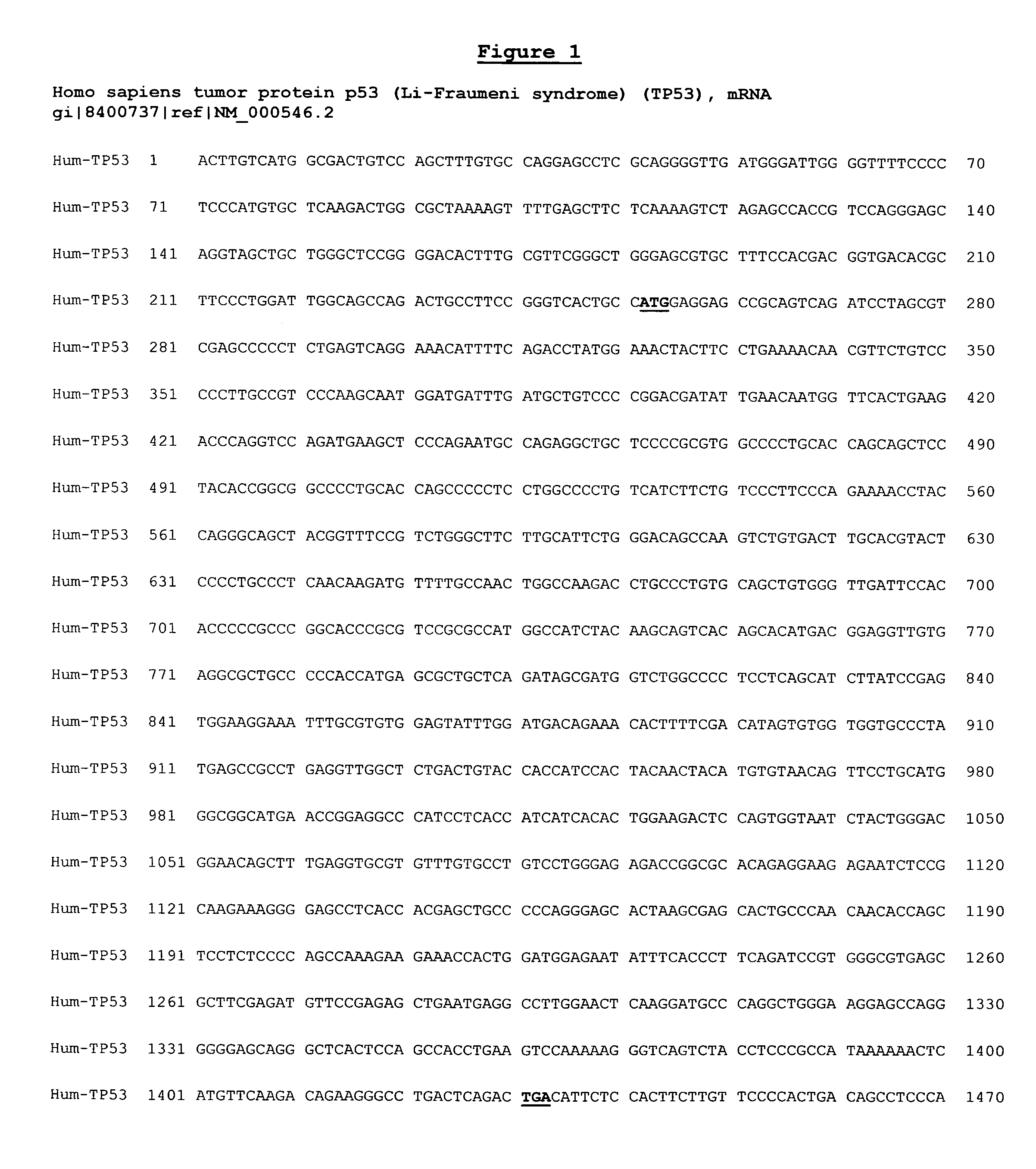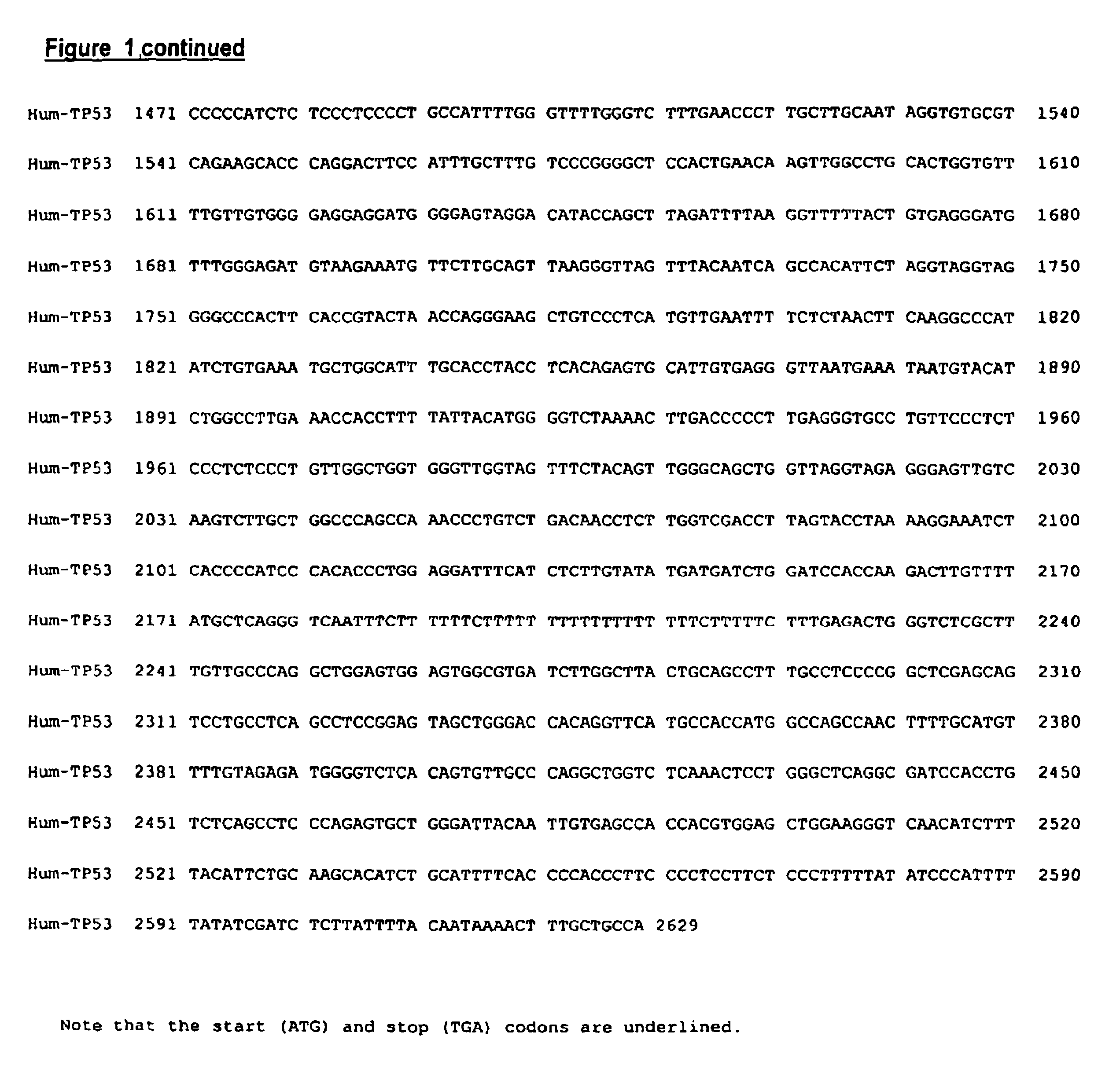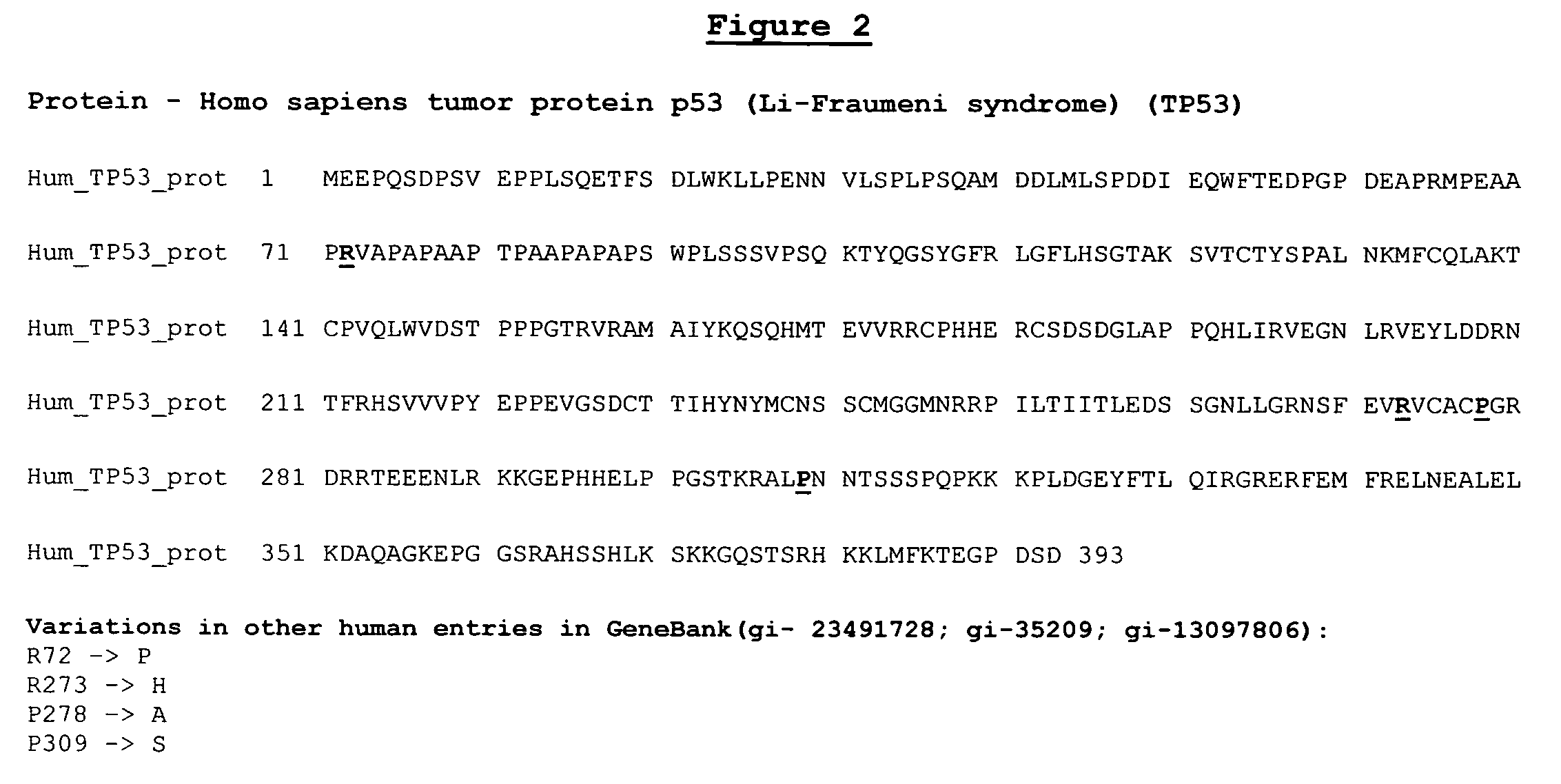Treatment or prevention of oto-pathologies by inhibition of pro-apoptotic genes
a technology of proapoptotic genes and otopathologies, which is applied in the direction of genetic material ingredients, drug compositions, organic chemistry, etc., can solve the problems of reducing the usefulness of antimicrobial agents, limiting the therapeutic value of various ototoxic therapeutic drugs on auditory cells and spiral ganglion neurons, and severe side effects of damage or death of healthy cells, so as to prevent ototoxicity and lower the dosage of ototoxic pharmaceuticals ,
- Summary
- Abstract
- Description
- Claims
- Application Information
AI Technical Summary
Benefits of technology
Problems solved by technology
Method used
Image
Examples
example 1
Generation of Sequences for Active siRNA Compounds
[0163]Using proprietary algorithms and the known sequence of gene p53 (SEQ ID NO:1), the sequences of many potential siRNAs were generated. Table A shows 23 siRNAs which have so far been selected, chemically synthesized and tested for activity (see Example 2). All these siRNAs are 19-mers.
[0164]
TABLE ANM_000546NM_011640NM_0309NumberIndexSense strandAntisense strandSpecies(human)(mouse)89(rat)1Mo3GUACAUGUGUAAUAGCUCCGGAGCUAUUACACAUGUACmouse3 mis1232-12502 mis2Hu2′GACUCCAGUGGUAAUCUACGUAGAUUACCACUGGAGUChuman*1026-10443 mis2 mis3QHMoCAGACCUAUGGAAACUACUAGUAGUUUCCAUAGGUCUGhum, mon310-3283 mis4 misn14QHMoCUACCUCCCGCCAUAAAAAUUUUUAUGGCGGGAGGUAGhum, mon1378-13961 mis1 misn25QH1CCCAAGCAAUGGAUGAUUUAAAUCAUCCAUUGCUUGGGhuman361-379NoNo6QH2CCCGGACGAUAUUGAACAAUUGUUCAAUAUCGUCCGGGhuman389-407NoNo7QM1GAGUCACAGUCGGAUAUCAUGAUAUCCGACUGUGACUCmouseNo552-5702 mis8QM2GGAUGUUGAGGAGUUUUUUAAAAAACUCCUCAACAUCCmouseNo680-6984 mis9QM3CAUCUUUUGUCCCUUCUCAUGAGAAGGGACAAAA...
example 2
Testing the siRNA Compounds for Anti-p53 Activity
Protocols
I. Preparation of the siRNAs (Double-stranded Oligonucleotides)
[0169]Lyophilized oligonucleotides were dissolved in RNAse free distilled water to produce a final concentration of 100 uM. The diluted oligonucleotides were kept at room temperature for 15 min and immediately frozen in liquid nitrogen.
[0170]The oligonucleotides were stored at −80° C. and diluted before use with PBS.
II. Transfection of siRNA in Human Cells with Lipofectamine-2000 Reagent:
[0171]2×105 p53-wt HCT116 or SW480 cells were seeded per well in 6 wells plate. 24 h subsequently, cells were transfected with p53 oligonucleotides using lipofectamine-2000 reagent (obtained from Invitrogen).
[0172]The following procedure was performed:[0173]1. Before transfection, the cell medium was replaced by 1500 ul fresh medium without antibiotics.[0174]2. In a sterile, plastic tube, Lipofectamine-2000 reagent (the amount is calculated according to 5 ul per well) was added to...
example 3
Distribution of Cy3-PTEN siRNA in the Cochlea Following Local Application to the Round Window of the Ear
[0195]A solution of 1 μg / 100 μl of Cy3-PTEN siRNA (total of 0.3-0.4 μg) PBS was applied to the round window of chinchillas. The Cy3-labelled cells within the treated cochlea were analyzed 24-48 hours post siRNA round window application after sacrifice of the chinchillas. The pattern of labeling within the cochlea was similar following 24 h and 48 h and includes labeling in the basal turn of cochlea, in the middle turn of cochlea and in the apical turn of cochlea. Application of Cy3-PTEN siRNA onto scala tympani revealed labelling mainly in the basal turn of the cochlea and the middle turn of the cochlea. The Cy3 signal was persistance to up to 15 days after the application of the Cy3-PTEN siRNA. These results indicate for the first time that local application of siRNA molecules within the round window leads to significant penetration of the siRNA molecules to the basal, middle and...
PUM
| Property | Measurement | Unit |
|---|---|---|
| molecular weight | aaaaa | aaaaa |
| molecular weight | aaaaa | aaaaa |
| molecular weight | aaaaa | aaaaa |
Abstract
Description
Claims
Application Information
 Login to View More
Login to View More - R&D
- Intellectual Property
- Life Sciences
- Materials
- Tech Scout
- Unparalleled Data Quality
- Higher Quality Content
- 60% Fewer Hallucinations
Browse by: Latest US Patents, China's latest patents, Technical Efficacy Thesaurus, Application Domain, Technology Topic, Popular Technical Reports.
© 2025 PatSnap. All rights reserved.Legal|Privacy policy|Modern Slavery Act Transparency Statement|Sitemap|About US| Contact US: help@patsnap.com



